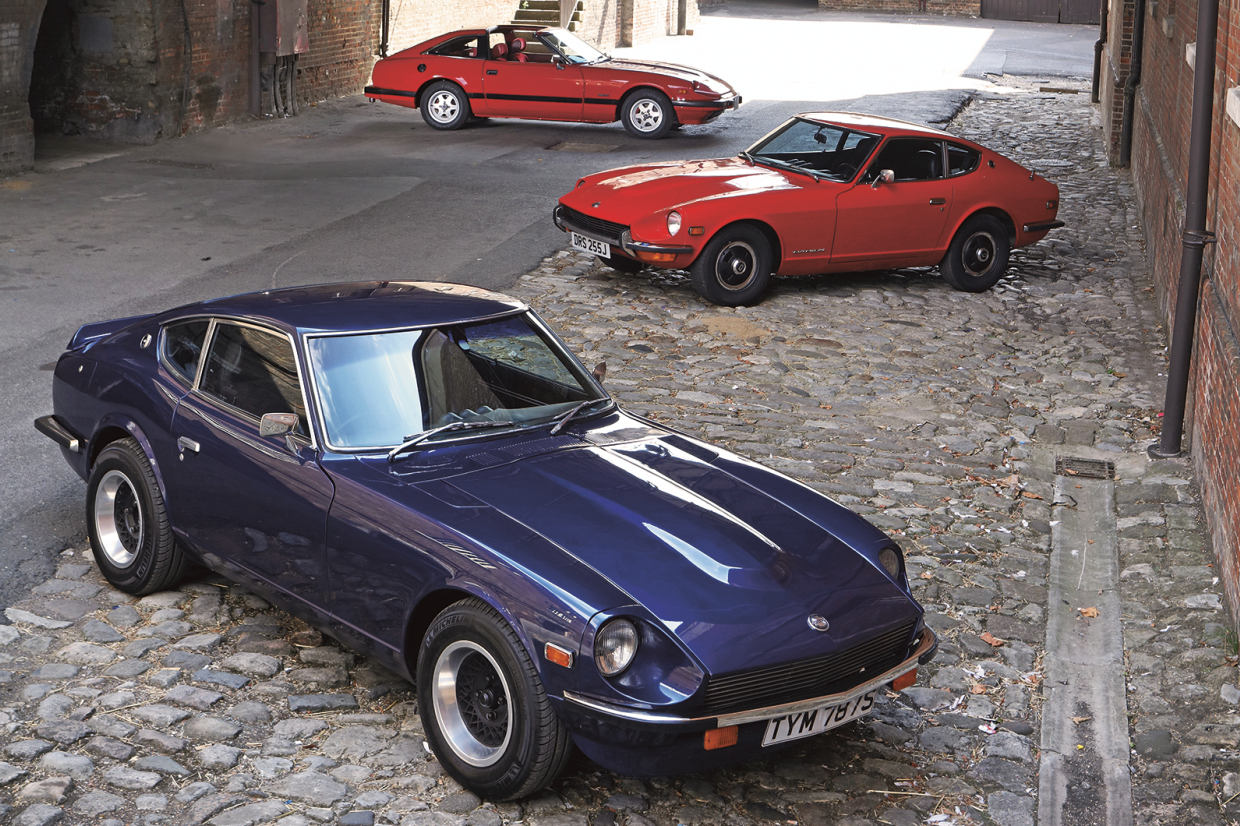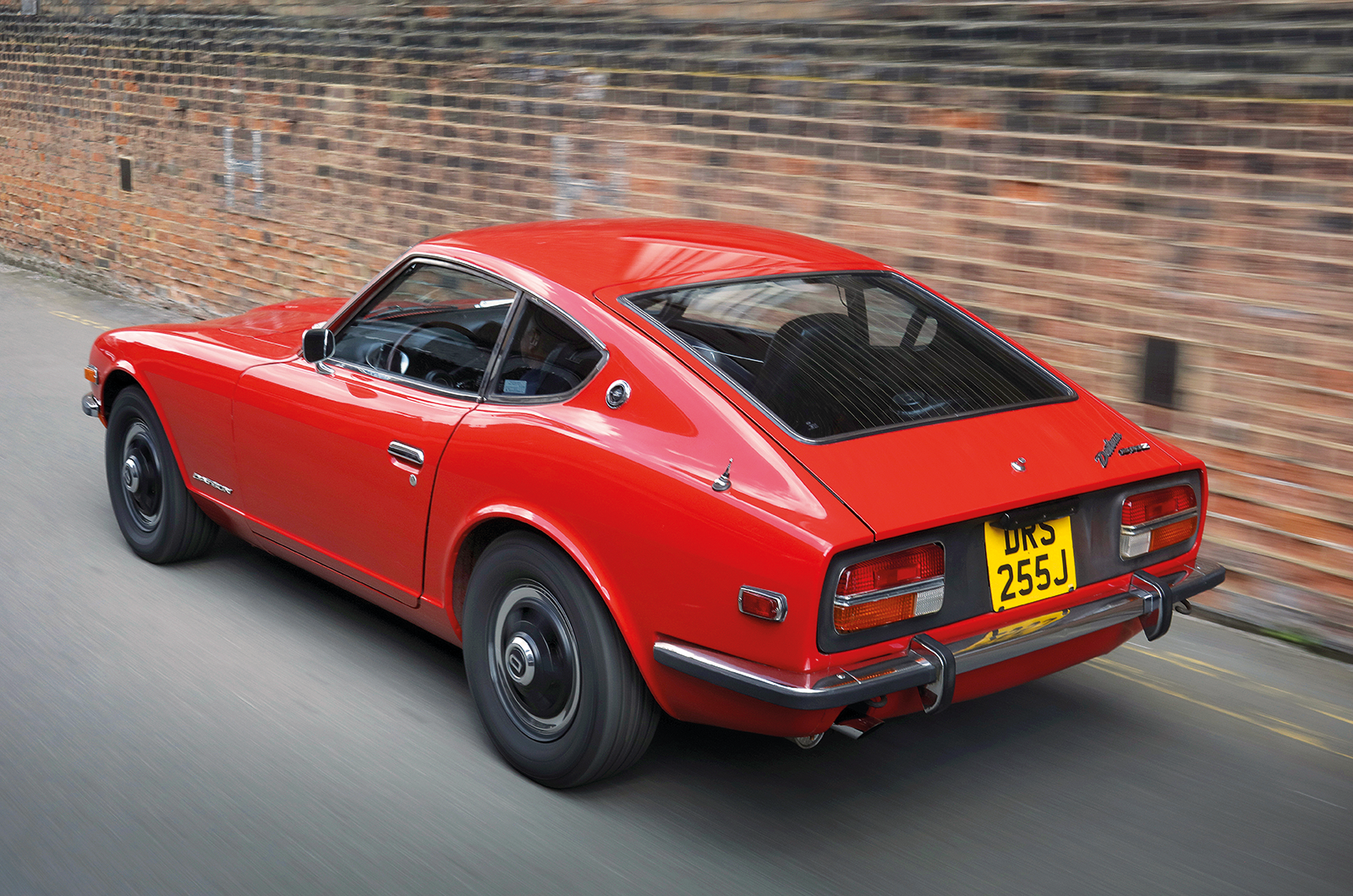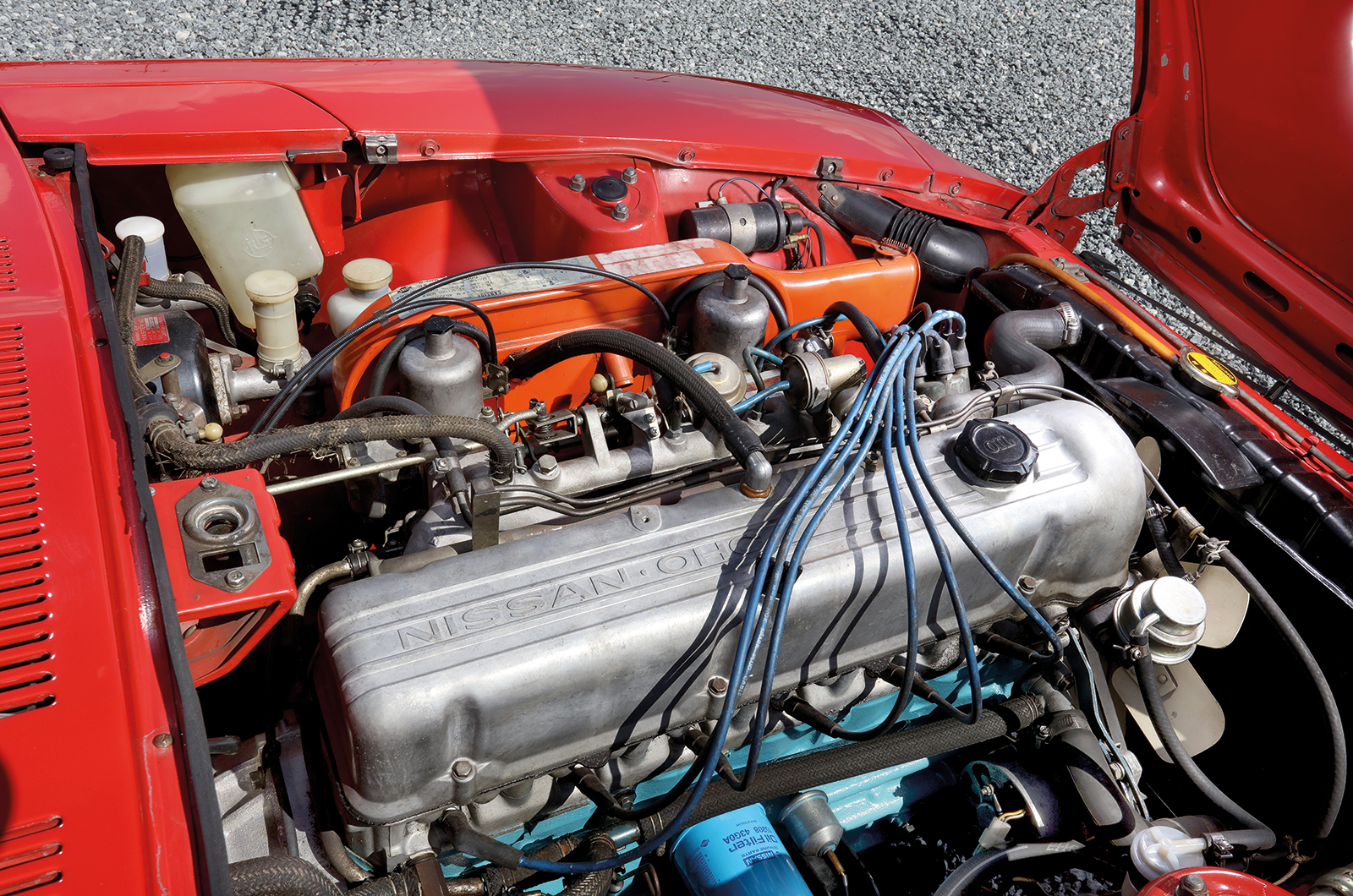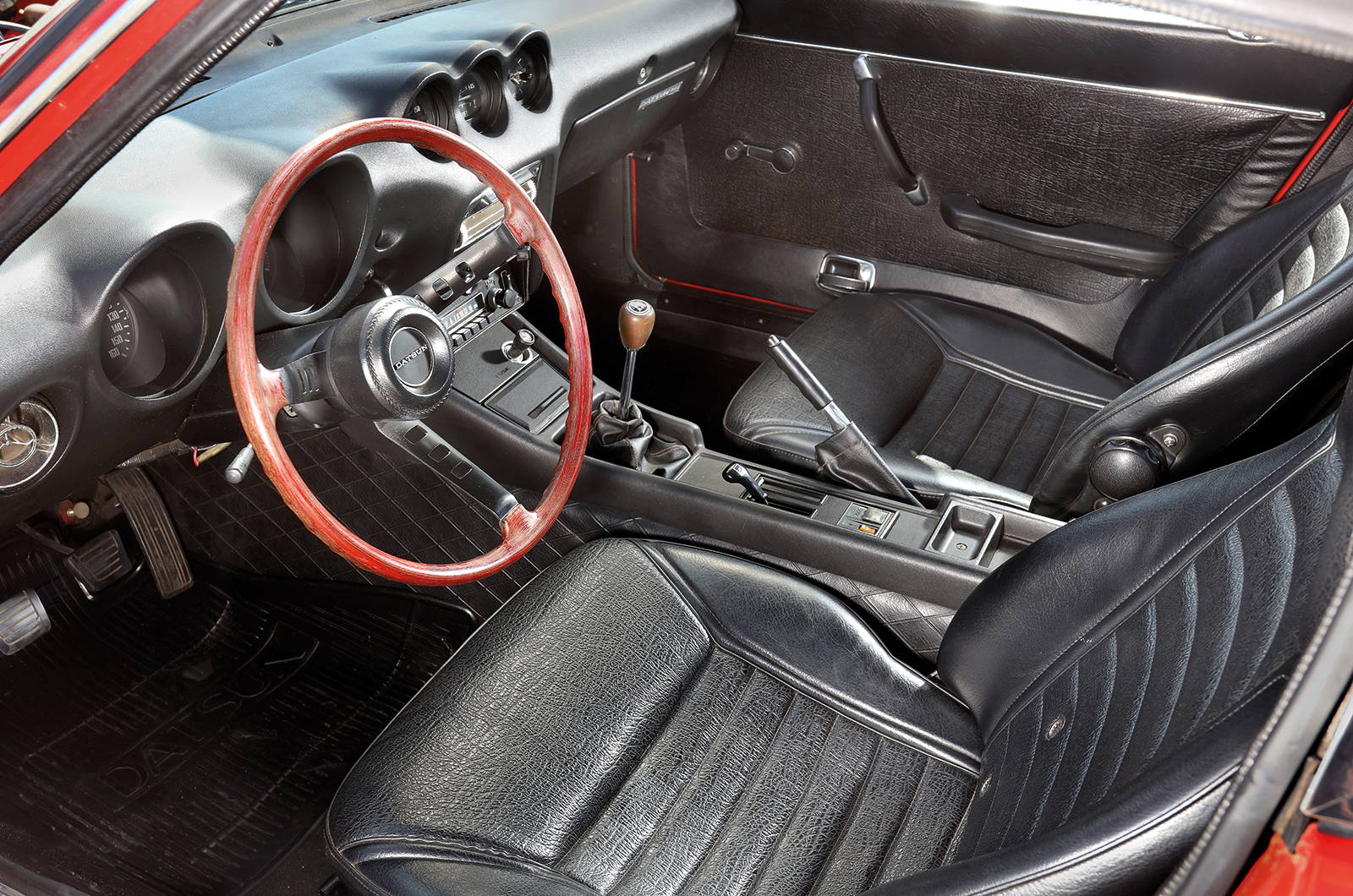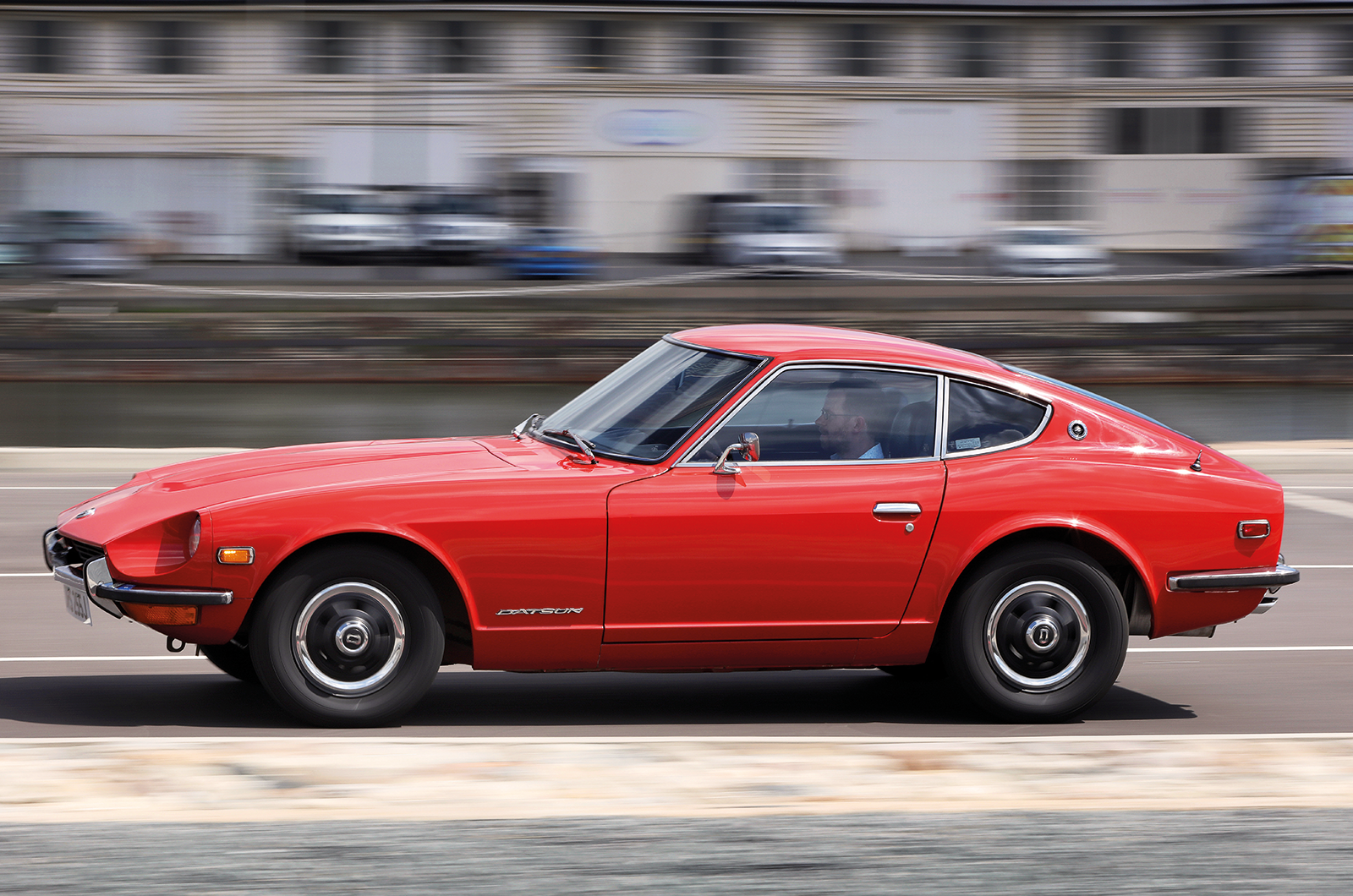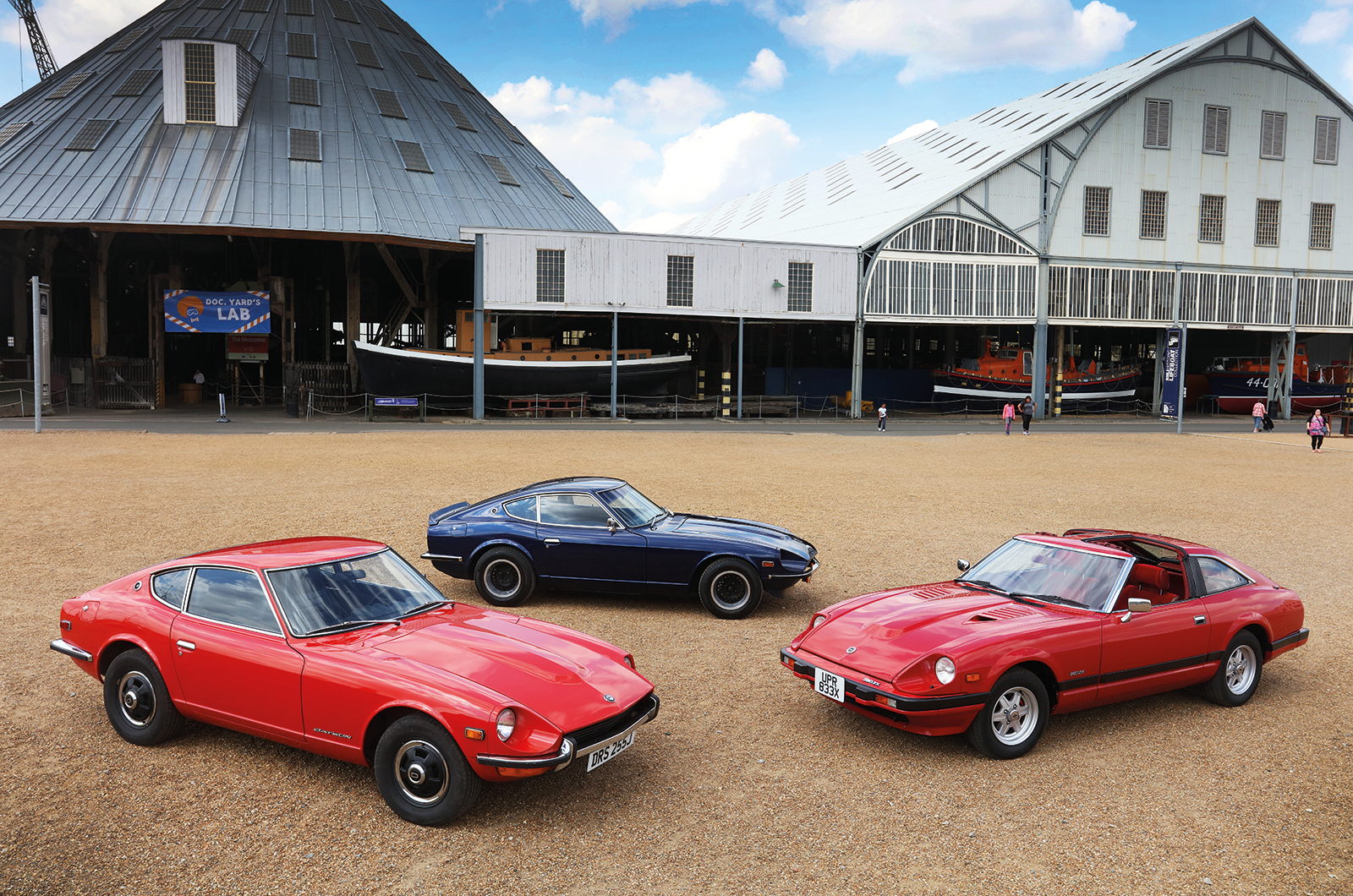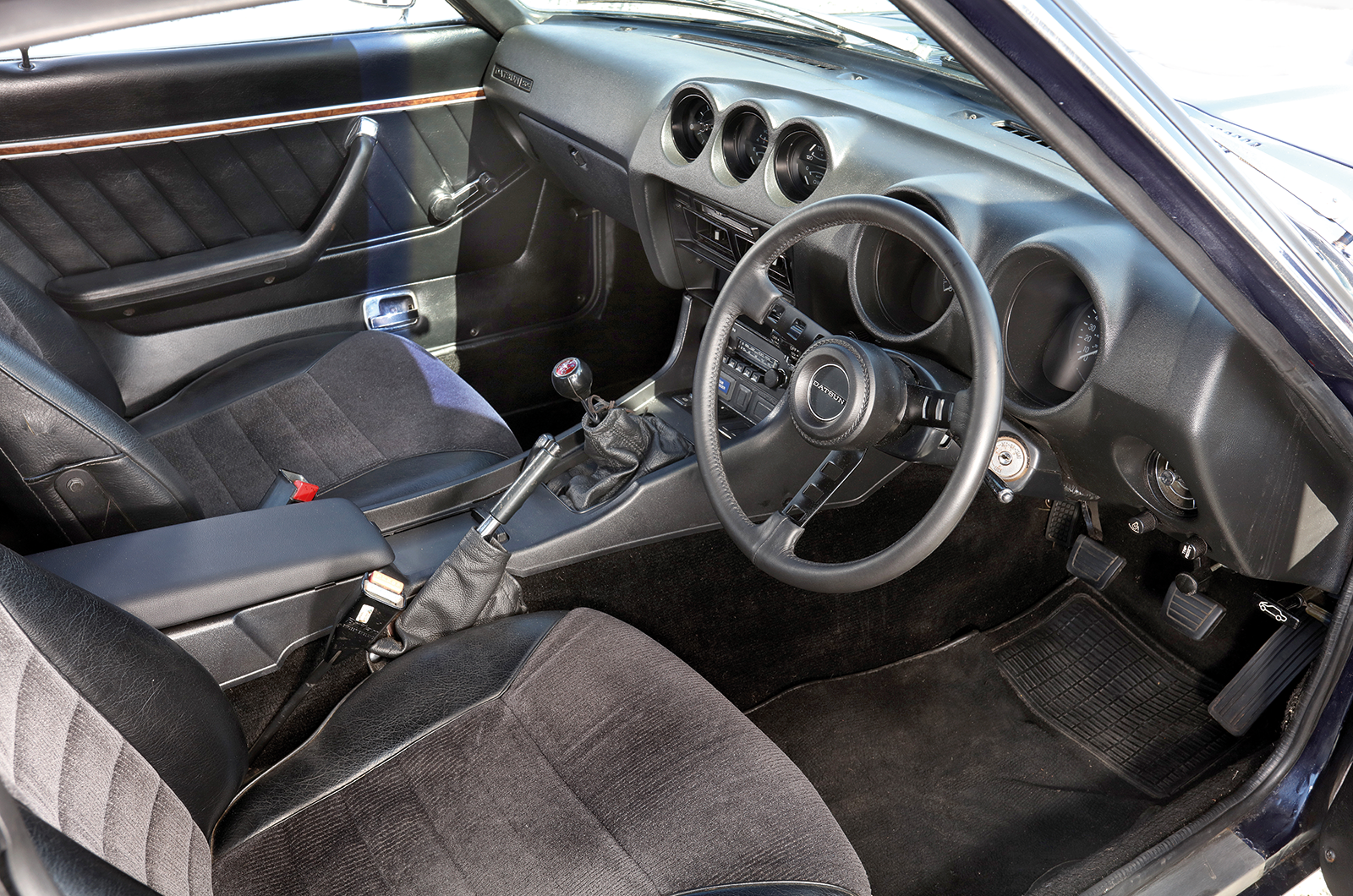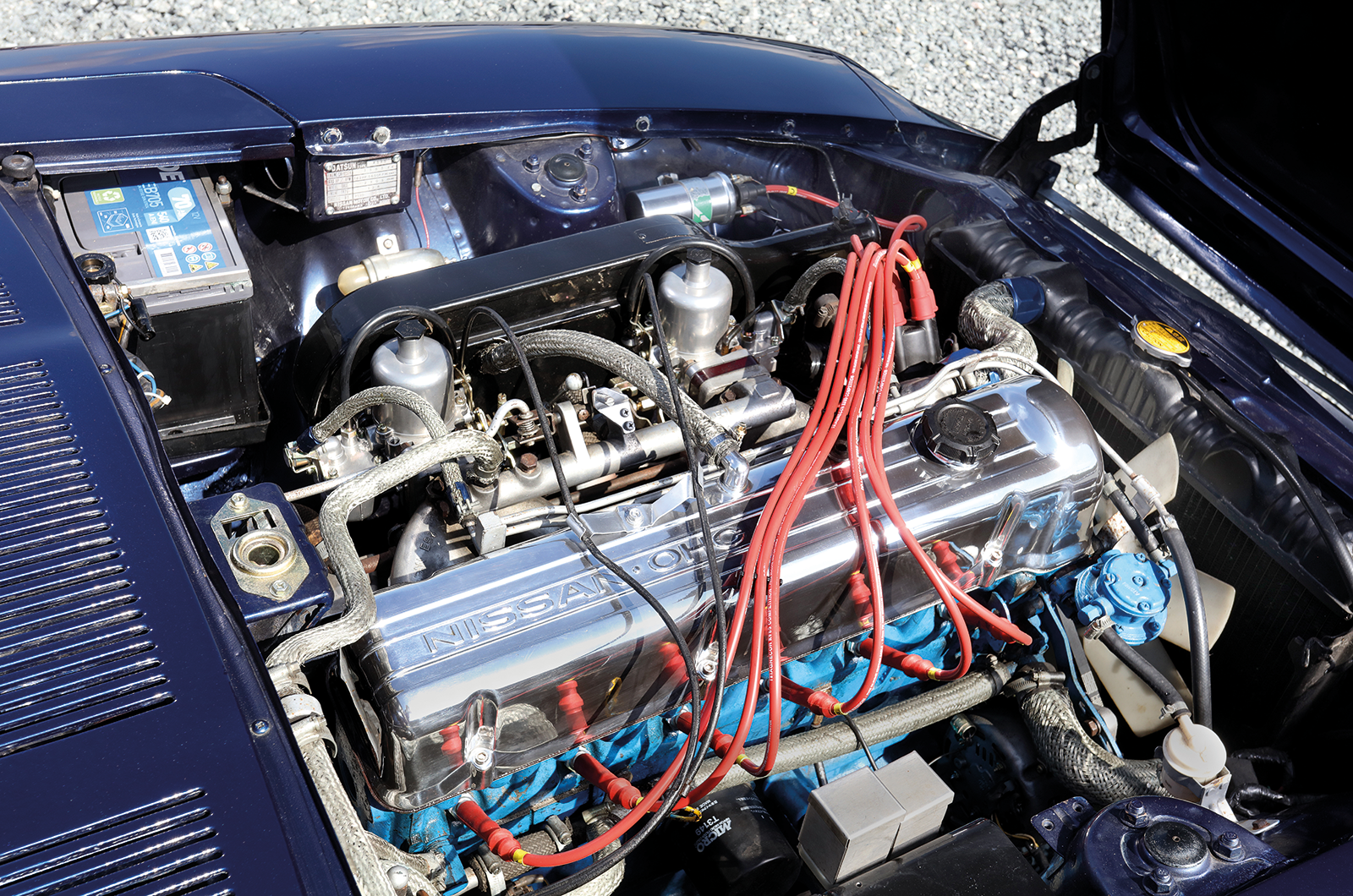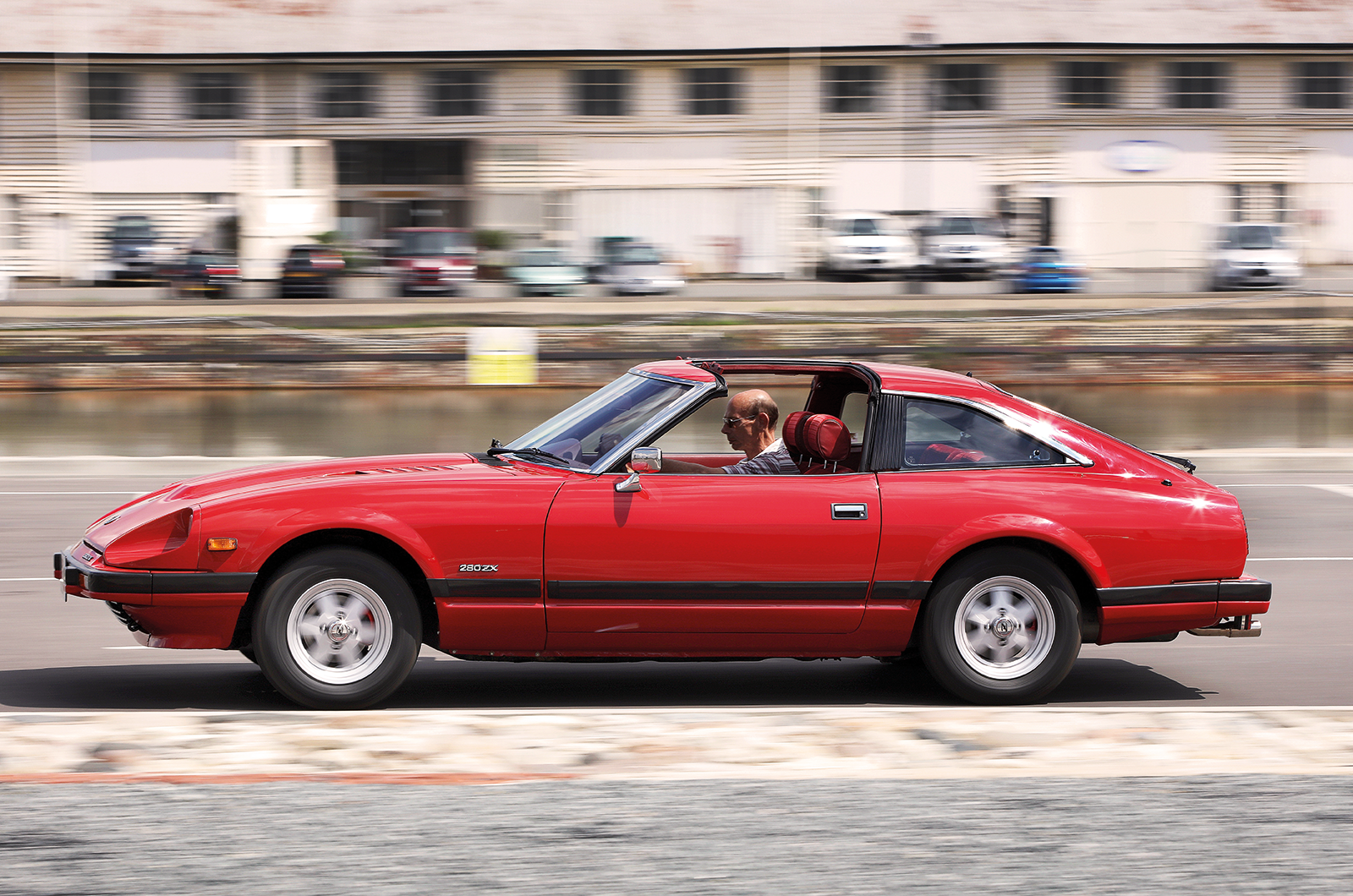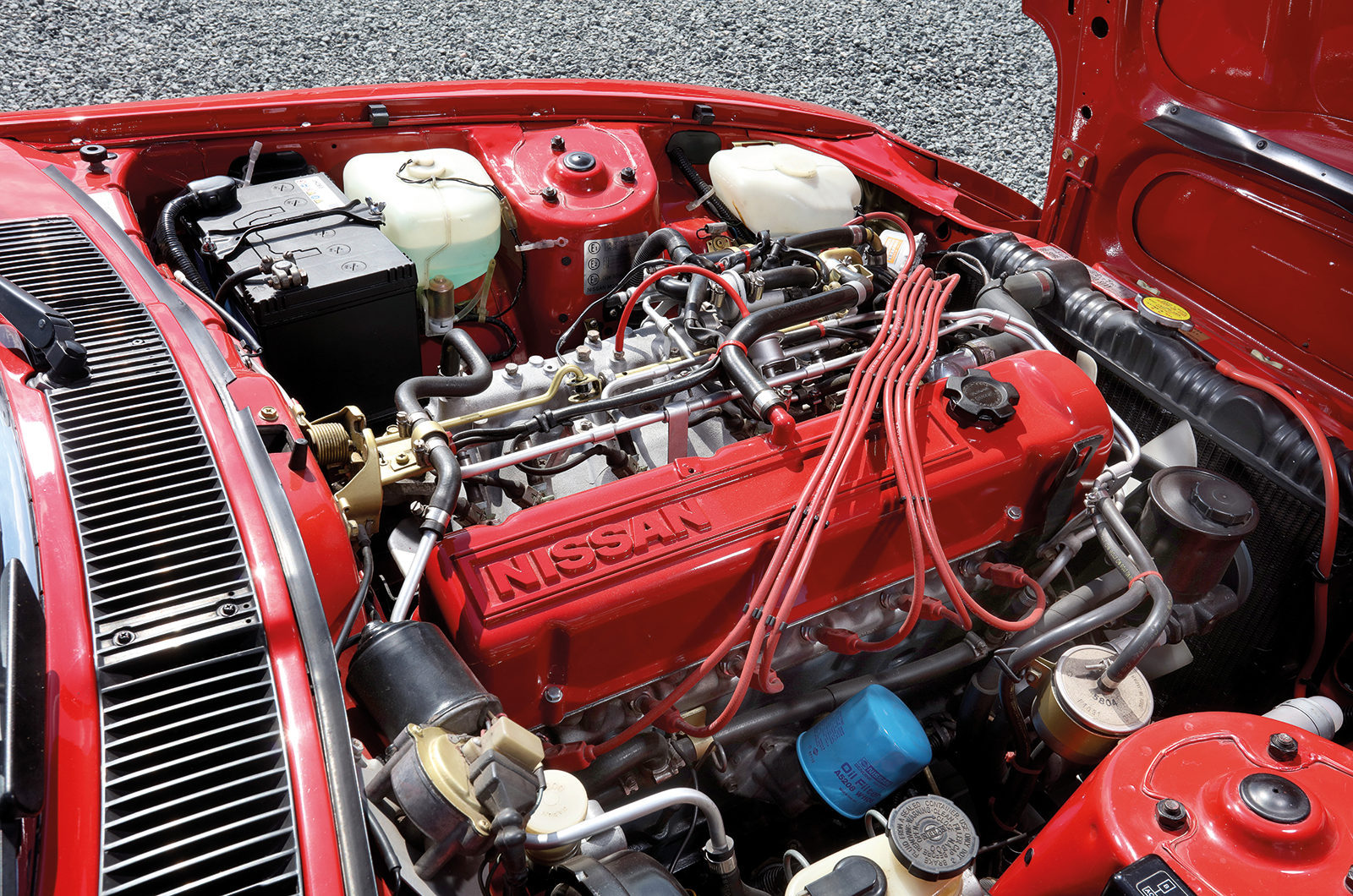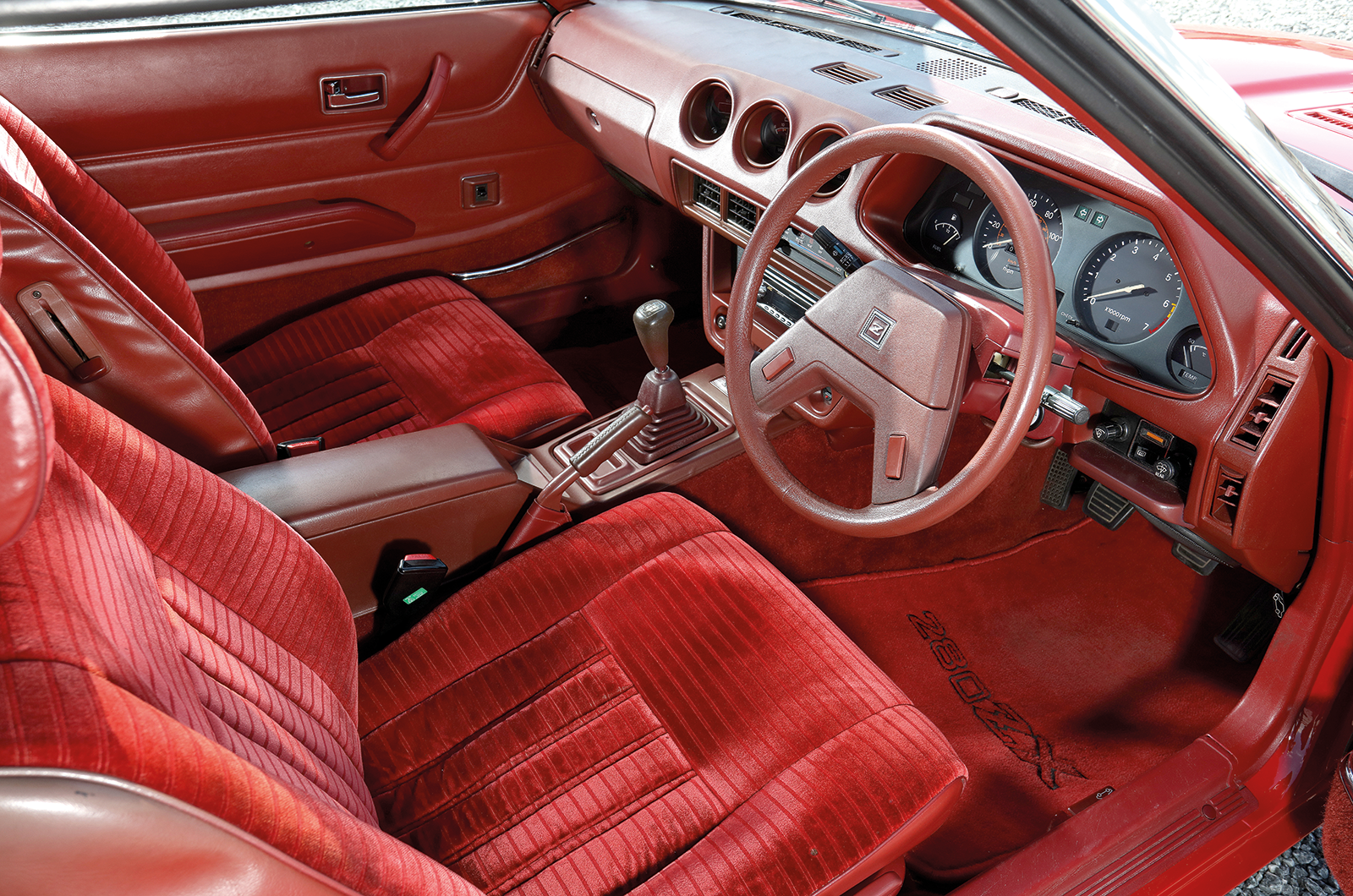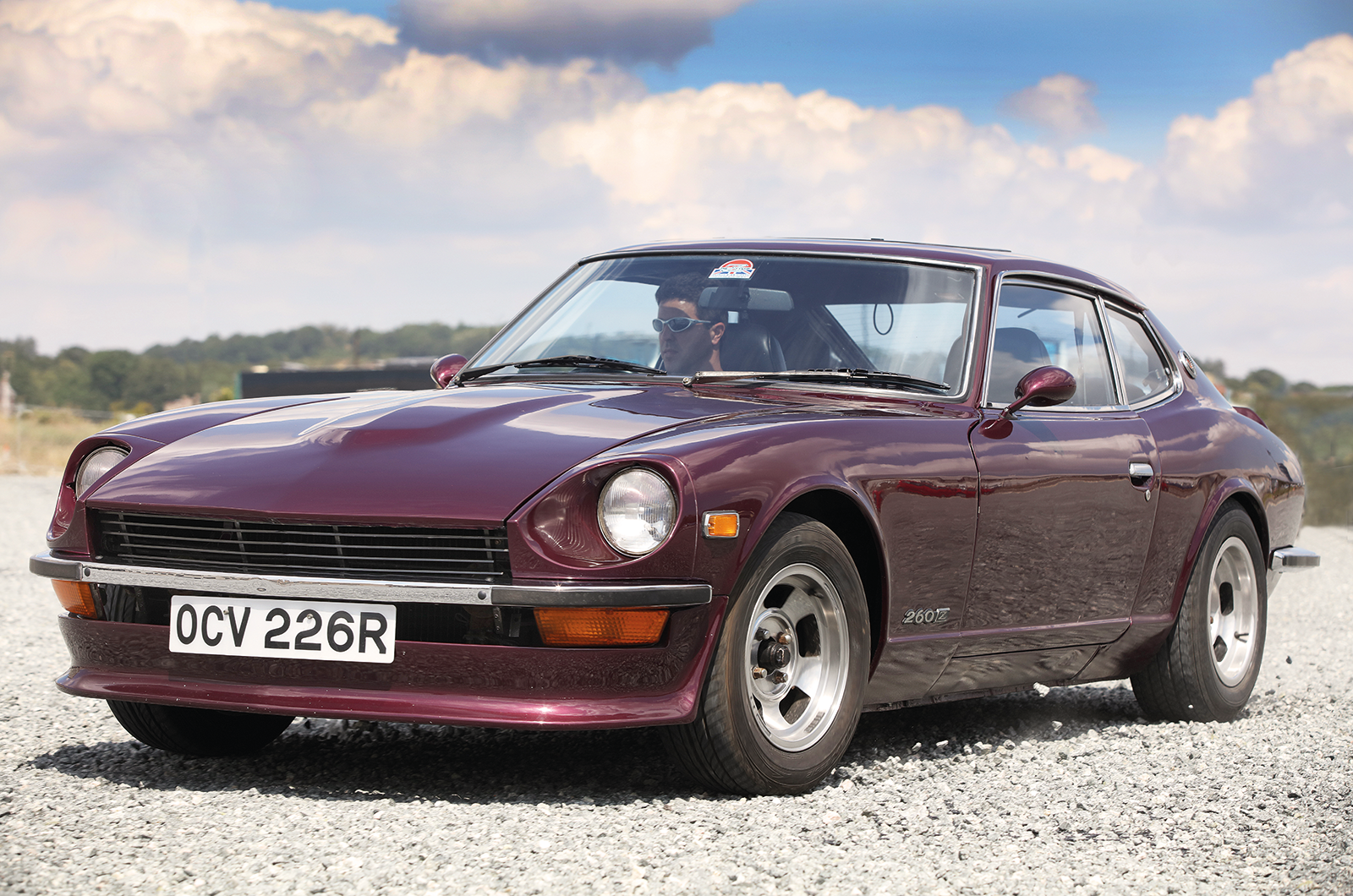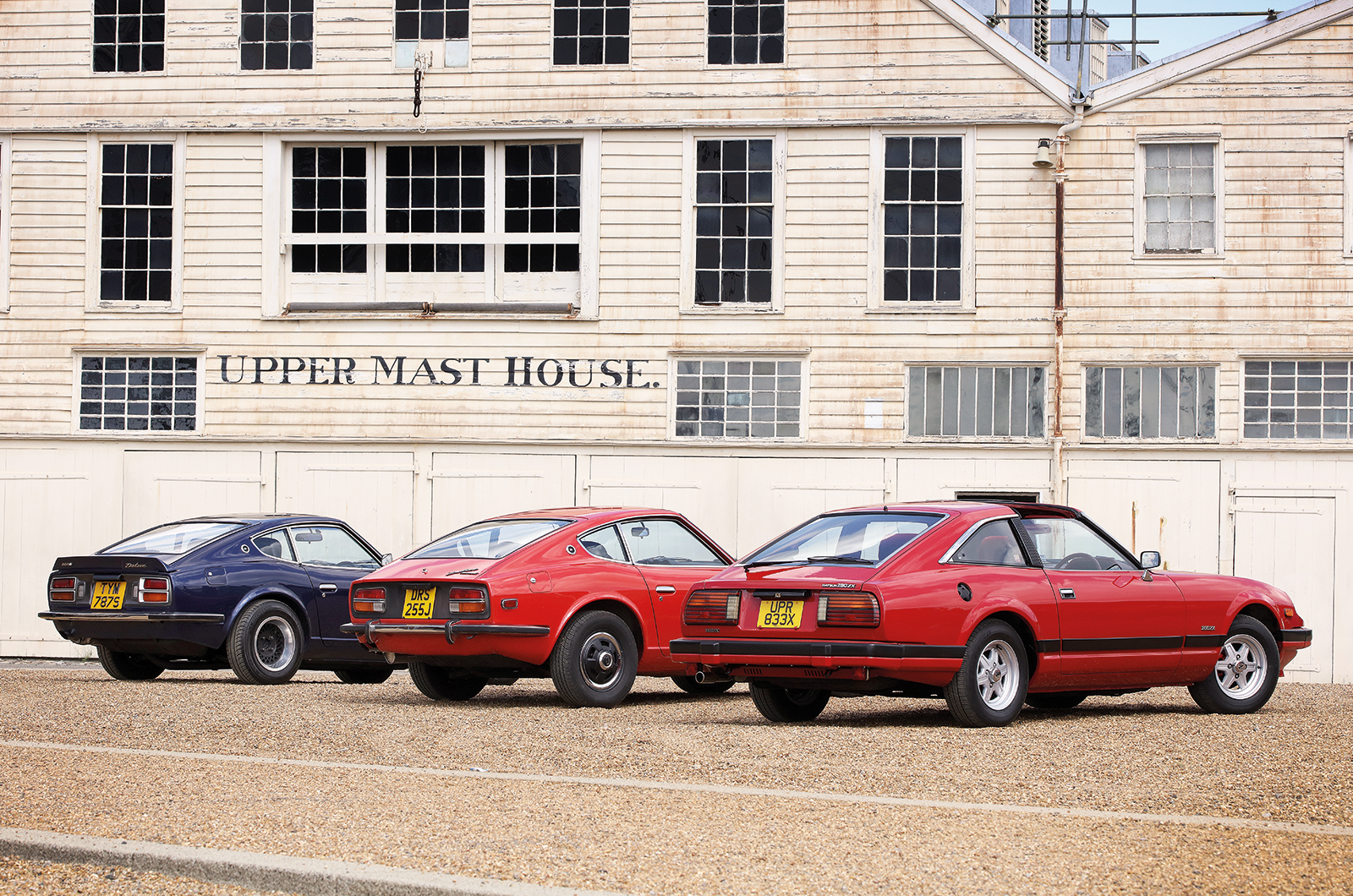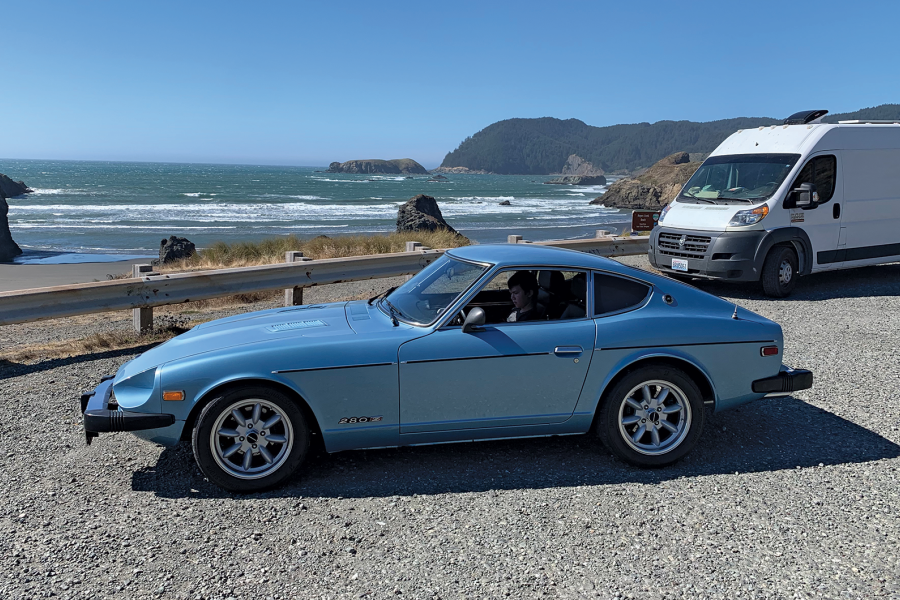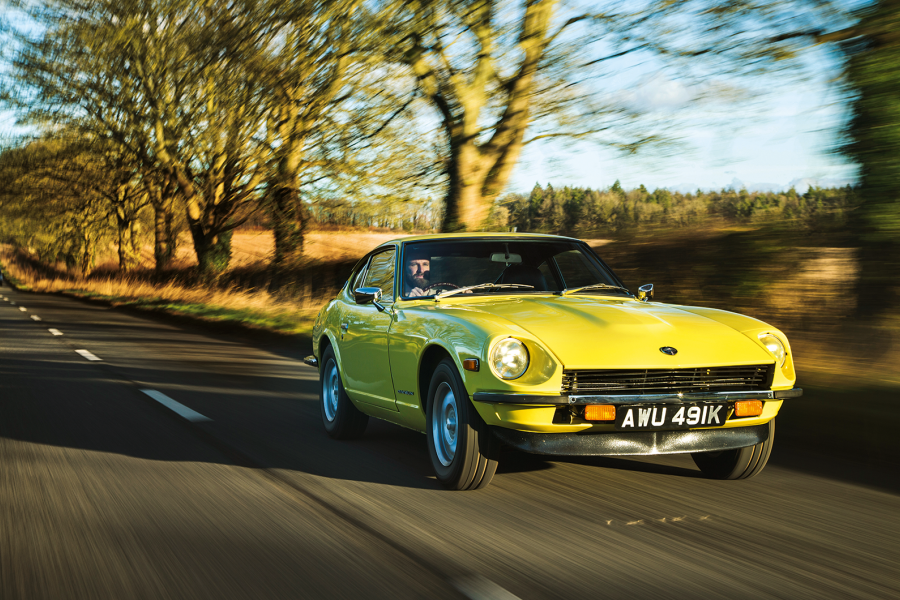The 280ZX would retain MacPherson struts at the front, but with semi-trailing arms from the Datsun Bluebird 810 at the rear, while on UK-market cars steering would be by power-assisted recirculating ball rather than the earlier cars’ manual rack-and-pinion system.
The overall result was a softer, more grown-up model – a long-distance tourer rather than a lairy hooligan
That difference in character is immediately apparent.
Fuel injection replaced carburettors for the 140bhp Datsun 280ZX
Gone is the spartan black vinyl, replaced by swathes of crushed velvet, while the dashboard and frameless electric windows give the feel of a contemporary Mercedes-Benz W123 coupé.
It’s a supremely comfortable place to be, and a lot less punishing to steer around town compared to its forebears – the assistance and a slicker, lighter gearchange taking the effort out of city driving.
This is a car that you could easily live with on a day-to-day basis.
Motor praised the 280ZX for being quiet, well equipped and having excellent road manners, but criticised it for a lack of poke compared to the S30.
Nissan would address that with the 200bhp T-bar Turbo, which it unveiled at the 1979 Frankfurt show.
Alas, while that car’s targa-style roof made it to these shores on the 2+2 from 1981, the hotter engine would never be marketed in Britain – although tuning specialist Janspeed offered its own turbo conversion.
The Datsun 280ZX’s interior is brighter, yet something of an acquired taste
The two-seater was discontinued in the UK in September 1982, while the 2+2 was replaced by the all-new V6-engined 300ZX in ’84, marking the end of the L-series models.
The 240Z and 260Z offer the purest styling as well as the most undiluted driving experience – they are fantastic cars and fully deserve their place in the history books.
But don’t write off the 280ZX. It’s far better than its reputation might have you believe, plus it represents tremendous value today.
It doesn’t have the same raw appeal as its earlier siblings, but that doesn’t necessarily make it a bad car.
It’s simply that for the Z car, too, times had been a-changin’.
Images: James Mann
Thanks to: JD Classics for the featured 240Z; Ali Khosravi; Anthony Toop, John Peek; The Z Club; Fourways Engineering; Chatham Historic Dockyard
This was first in our October 2015 magazine; all information was correct at the date of original publication
Datsun 260Z 2+2: family-friendly sports car
The larger Datsun 260Z 2+2 was a sales success
Although the 240Z was only ever offered as a strict two-seater, in November 1973 Datsun broadened the 260Z’s appeal by adding an occasional four-seater to the line-up.
Sitting on a floorpan that had been stretched by 12in and costing £600 more than the two-seater, the 2+2 – or ‘2by2’ as it was marketed in Japan – was pricey compared to rivals such as the Ford Capri 3-litre and Reliant Scimitar GTE.
Even so, Autocar deemed it to be a ‘complete success’, and customers clearly agreed.
It outsold the regular model by almost two to one.
A rare version today – The Z Club reckons that there are no more than 20 left on UK roads – it would pave the way for the bigger, heavier 280ZX.
The latter, in contrast, is much more likely to be seen as a 2+2 than a two-seater, reflecting that model’s role as a civilised GT in the mould of the Vauxhall Royale, rather than an outright sports car.
Factfiles
Datsun 240Z
- Sold/number built 1969-’73/156,078
- Construction steel monocoque
- Engine iron-block, alloy-head, single-overhead-camshaft 2393cc straight-six, twin Hitachi SU-type carburettors
- Max power 151bhp @ 5600rpm (SAE)
- Max torque 146lb ft @ 4400rpm (SAE)
- Transmission five-speed manual, driving rear wheels
- Suspension independent, at front by MacPherson struts, lower links, anti-roll bar rear MacPherson struts, lower wishbones
- Steering rack and pinion
- Brakes discs front, drums rear, with servo
- Length 13ft 7in (4140mm)
- Width 5ft 4in (1625mm)
- Height 4ft 2½in (1283mm)
- Wheelbase 7ft 6½in (2299mm)
- Weight 2284lb (1038kg)
- 0-60mph 8 secs
- Top speed 125mph
- Mpg 24
- Price new £2288 (1971)
Datsun 260Z
(where different)
- Sold/number built 1974-’78/466,571 (all 260Zs)
- Engine 2565cc
- Max power 162bhp @ 5600rpm (SAE)
- Max torque 152lb ft @ 4400rpm (SAE)
- Top speed 127mph
- Price new £2895 (1974)
- Price now £17,000-plus
Datsun 260Z 2+2
(where different to Datsun 260Z)
- Length 14ft 6in (4419mm)
- Width 5ft 5in (1651mm)
- Height 4ft 2½in (1283mm)
- Wheelbase 8ft 6½in (2603mm)
- Weight 2632lb (1195kg)
- 0-60mph 9.9 secs
- Top speed 120mph
- Price new £3429 (1974)
Datsun 280ZX
(where different)
- Sold/number built 1978-’83/414,628 (all types)
- Engine 2753cc, Bosch L-Jetronic injection
- Max power 140bhp @ 5200rpm (DIN)
- Max torque 149lb ft @ 4000rpm (DIN)
- Transmission five-speed manual or three-speed automatic, driving rear wheels
- Suspension independent, at rear by semi-trailing arms
- Steering power-assisted ZF recirculating ball
- Brakes discs all round, with servo
- Length 14ft 3in (4343mm)
- Width 5ft 6½in (1689mm)
- Height 4ft 3in (1295mm)
- Wheelbase 8ft 3in (2520mm)
- Weight 2881lb (1307kg)
- 0-60mph 10.4 secs
- Top speed 117mph
- Mpg 20
- Price new £9922 (1979)
Enjoy more of the world’s best classic car content every month when you subscribe to C&SC – get our latest deals here
READ MORE
Coupé conundrum: Ford Capri vs Datsun 240Z
Triumph tussle: TR5 vs TR6
Subaru SVX: Japan’s XJS-beater
Malcolm Thorne
Malcolm Thorne is a contributor to – and former Deputy Editor of – Classic & Sports Car
